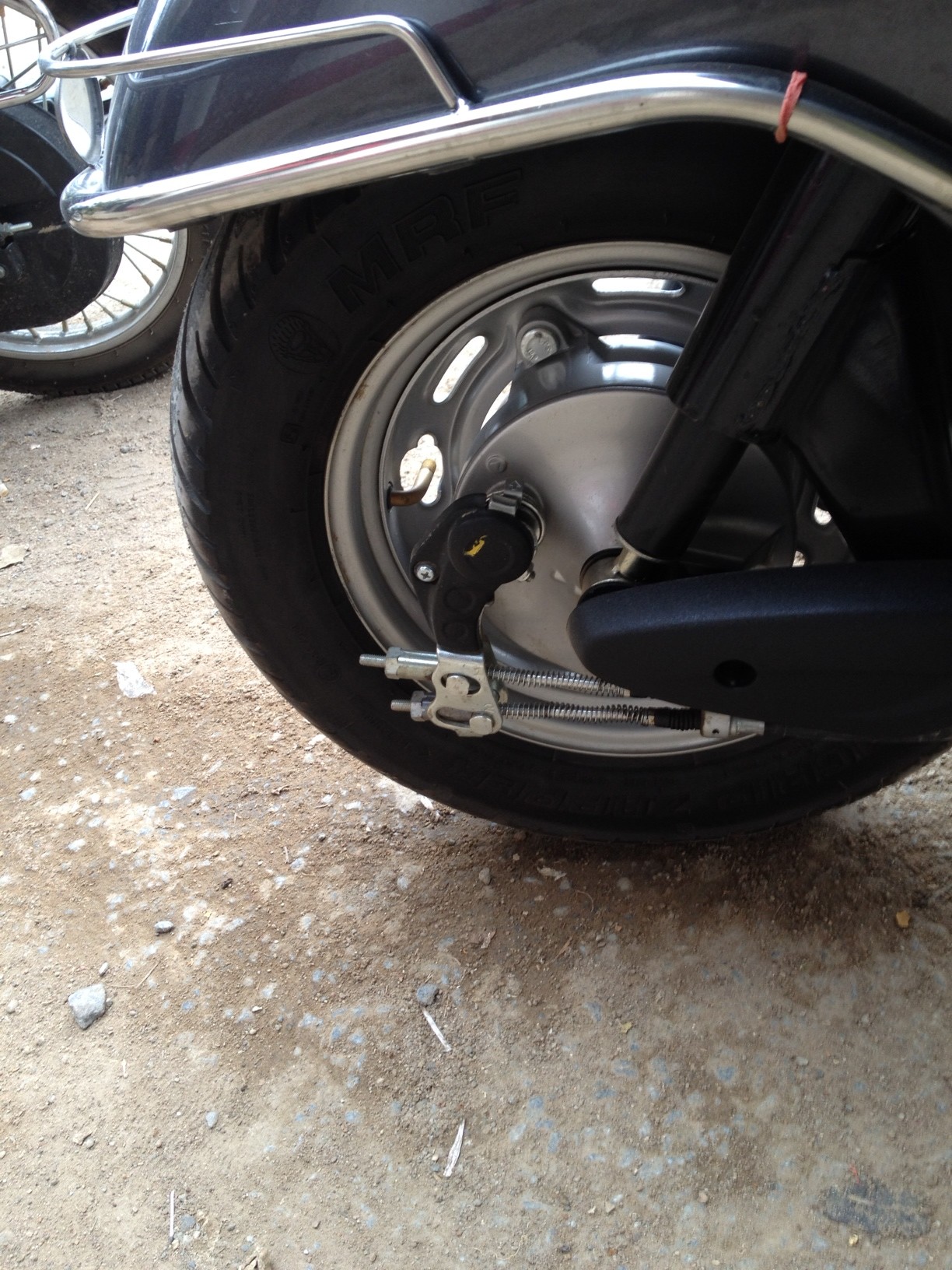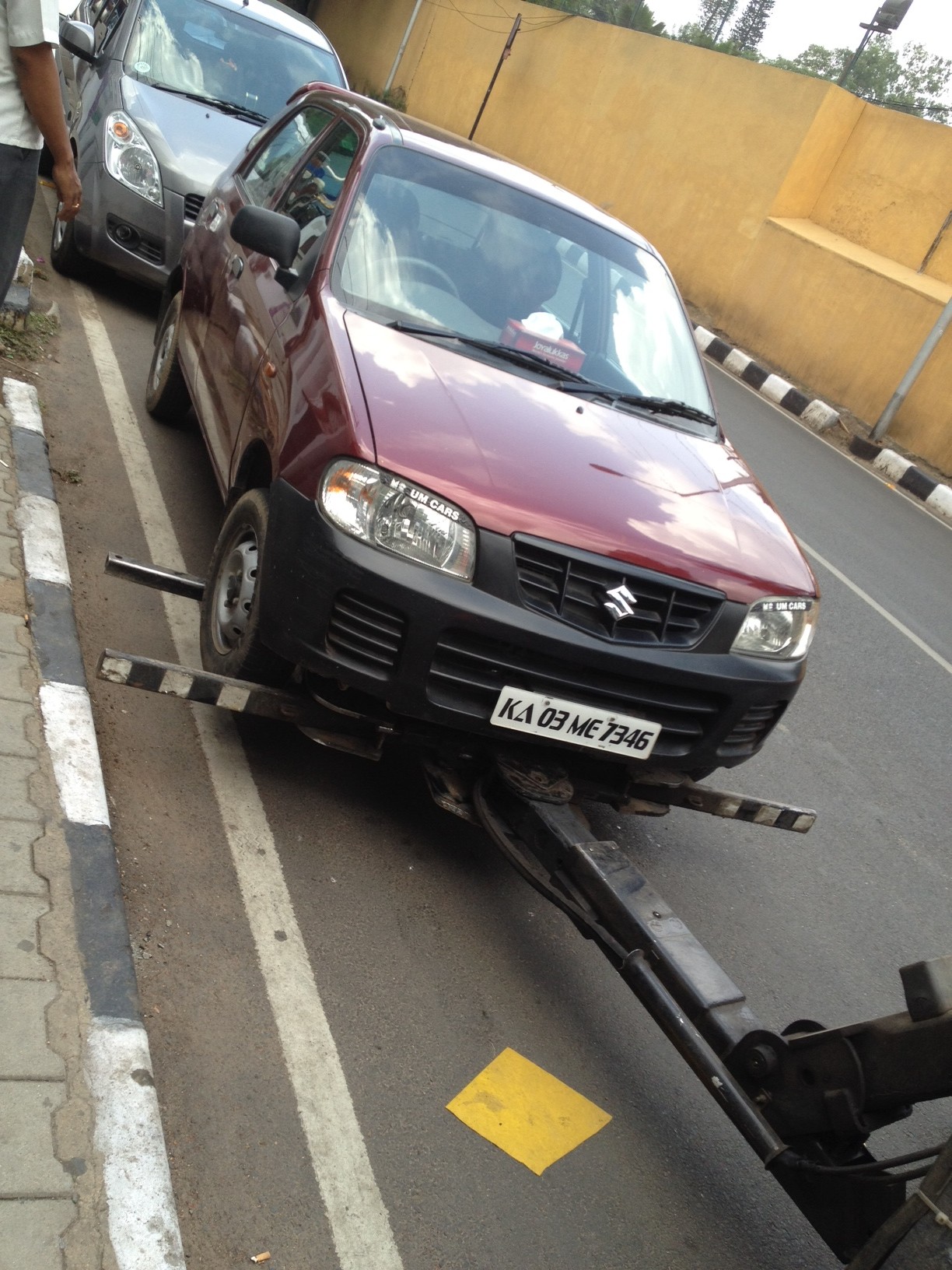This is a post about my experience so far with a Pure Fix single-speed bicycle. I’ve been in this for roughly three months and even it’s been quite cold weather-wise, I see a lot of cyclists on the road. Now that it’s getting slowly warmer, I started looking at ads on eBay for simple, low-maintenance bikes.
I rode a Bianchi roadbike back in Bangalore mostly for weekend long rides (ranging between 30km to 160km), it never was practical for me to commute with it – not because of the bike – but other factors. When moving to this city, I considered carrying the bike, but since I had enough luggage and my wife with me I gave up on the idea and left my bike with my brother-in-law.
Bicycling these days, someone once said, is like Golf. It’s easy to get carried away and spend lot on equipment and maintenance. The road bike required expensive chains, and if not well taken care of, expensive replacement parts in the drivetrain.
I still keep an eye on the Bangalore Bikers Club google group and noticed several veterans taking the plunge on “fixies” and single-speed bikes. I thought to myself: here’s a city which is mostly flat (unlike Bangalore), has smooth tarmac (unlike Bangalore); why bother with expensive bikes at all then? I kept a budget of under 300 EUR and got hold of this bike through their website with additional seasonal discounts!
Why Pure Fix? One, I had heard of it back from Bangalore from the BOTS store. Second, compared to the certain brands made in this city, the pricing is very favourable. There are other similar bike companies (Mango bikes from UK, Velo-something from Hamburg and another brand in Germany) catering to the nouveau fixie / single-speed clientele. But being that almost all of them source their stuff from China and equipment were mostly of the same range, I went with a familiar brand and low pricing.
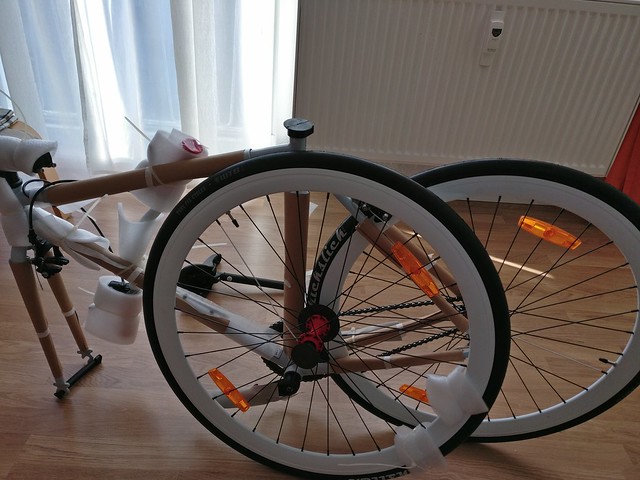
Once the order was placed on their European website, it was dispatched in a few days from their hub in the Netherlands. DHL had an issue with the address for some reason (apartment number was misprinted as street number) and there was an additional delay of a couple of days – but the customer service was good.
The packing of the bike was well done. I went to the Decathlon store and picked up a small toolkit and grease to assemble the bike from this stage. I gave-up on the warranty which is valid only if assembled at a local bike shop for the sake of learning to how to do this by myself. The bike looked fine out-of-the-box so I thought I’d be fine.
I assembled the bike and over the past few weeks added a bunch of accessories by myself and this is how it looks like now:
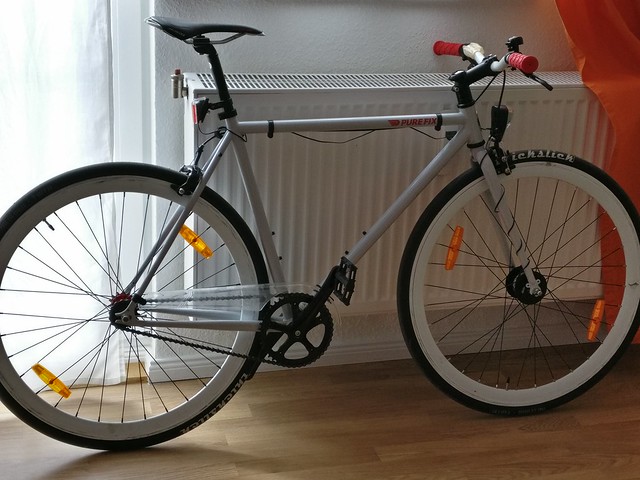
I assembled it on a Friday and took it out for a spin to the Calisthenics park on Saturday morning. When it was assembled, the front wheel seemed like it was out of true, but after riding it for a few kilometres, mysteriously the wheel was fine and the rim did not brush the brakes anymore.
The simple platform pedals are quite good. The wheels may look catchy but I’m not a fan of their weight. If they ever damage, I’ll replace them with non-deep-dish wheel. I had carried my Specialized saddle from my old bike and so I installed that here and stored the stock one away.
It’s illegal in this city to not have lights on the bike so I started looking for the usual battery operated ones online. I could either find really cheap be-seen ones or expensive also-see mountain-bike styled lights. Since my primary use for this bike is for commutes, I started thinking of more commute-oriented options. I read up on dynamo powered systems: both bottle-dynamo and the hub-dynamo. Looked up the prices and found that I could actually do this here.
Purchased a Shimano 3N31 hub-dynamo from eBay, a bunch of DT Swiss spokes and nipples off of Rose bikes, Union front light with light-sensor feature and Trelock rear light from Amazon. The Union light is supposed to be a knock-off (or inspired by) of a famous well-known brand Busch&Müller. The fun bit was the part where I undid all the spokes and nipples of the front wheel, measured a few things here and there in order to purchase the right length for the new spokes. The even more fun bit was the building of the wheel with the hub-dynamo.
I looked up a few youtube videos initially and it didn’t go well. It was clearly a mess and incorrect. Undid the spokes again and this time took the help of my wife who found used an app on her phone and guided my from the beginning and inspected my work at every turn. And then I did the truing following a very famous website. Almost seven hours later, it was ready.
The lights showed up later and were fitted. Then I took it to work. Good bike: it’s not Alu-frame like I’m used to, it’s the cheap Hi10 (high-tensile) steel, but I like it. There’s a bit of a rattle from the chain-guard and the reflector pieces attached to spokes, otherwise it’s a solid bike.
The (front) brakes wore out pretty quick (within 70km). I ordered a cartridge-type brake shoe made by Jagwire Taiwan. I installed them last night and I’ve yet to ride it but they seem pretty good. I’ll probably order another pair for the rear ones soon.
A few more pictures with a few details:
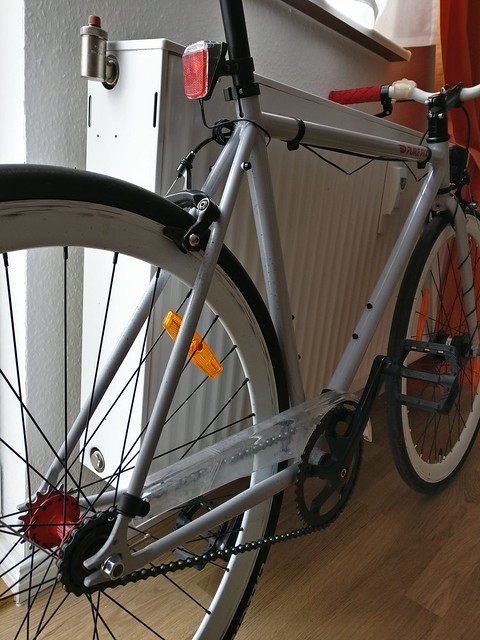
Notice the bolt near the rear-hub to fine-tune the tightening of the chain. Also notice the holes for attaching accessories later on if necessary. The chain-guard is nice to have. The paint on the rim is going to peel off due to the brakes.
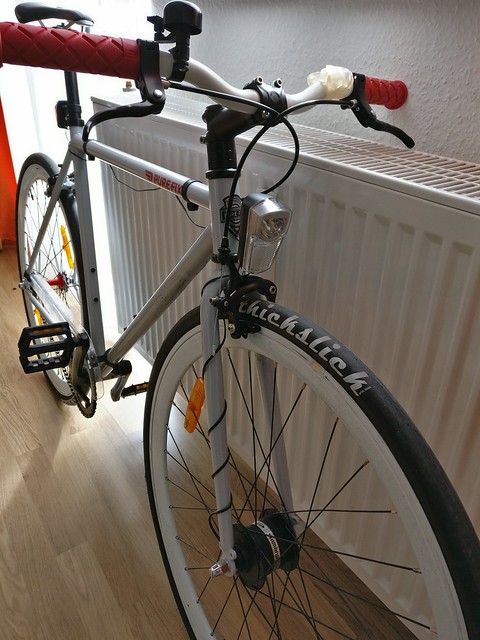
The wiring for the lights seems ugly, I’ll have to figure out something to tidy it up. Tektro brake sets on both sides. The front light uses reflection of LED beam to not pierce into the eyes of others looking at at from the front. Don’t want to blind a car from the front now, do we? The tyre is 28mm (good for city use!)
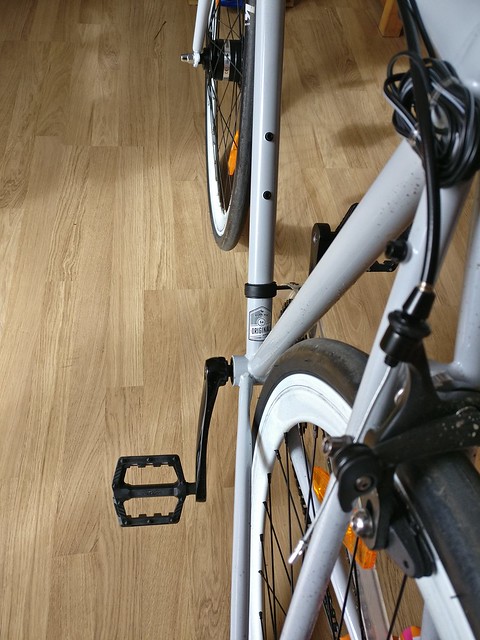
And there’s the branding and the platform pedal.
